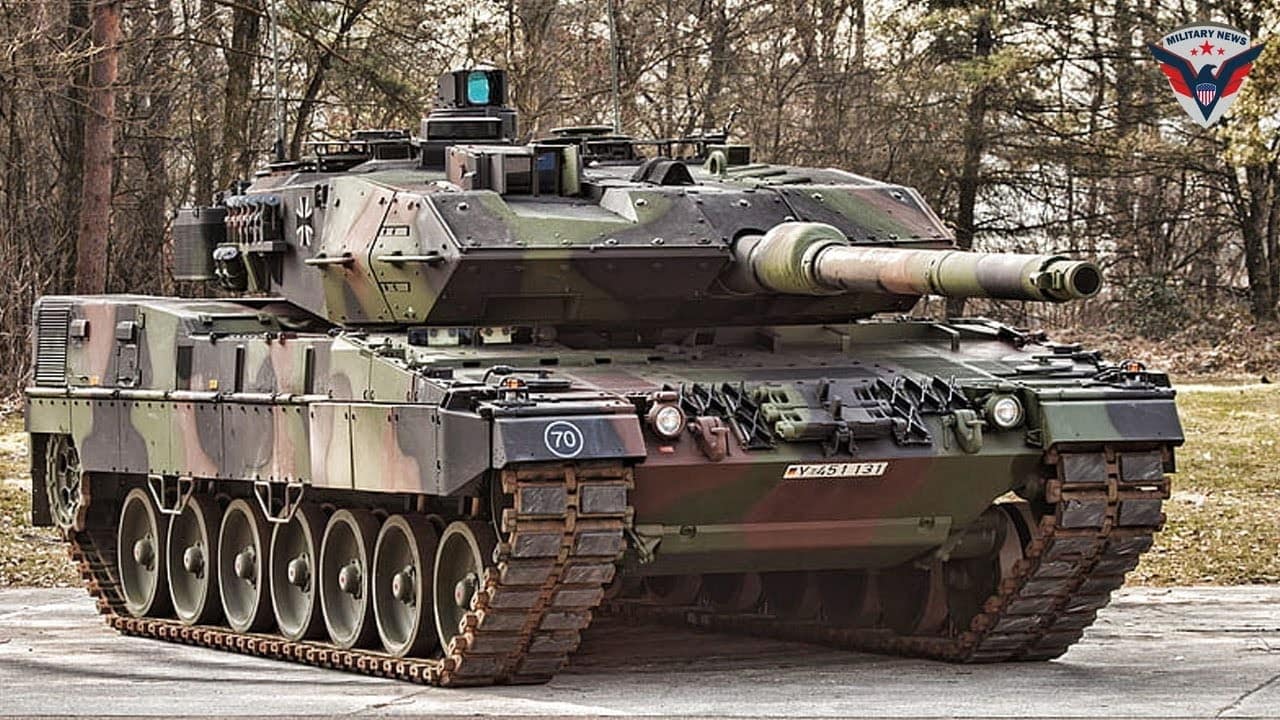This week, Poland announced that it would send Leopard 2 main battle tanks to Ukraine. The announcement came after months of requests by Kyiv for more advanced tanks.
(Subscribe to Our YouTube Channel Here. 19FortyFive publishes original videos every day.)
The Ukrainian military is preparing for another round of major counteroffensive operations on the ground, and more advanced main battle tanks, such as the Leopard 2, could make the difference against an increasingly depleting Russian tank fleet.
But Germany, the manufacturer of the Leopard 2, continues to be hesitant to send the main battle tank to Ukraine.
Leopard 2: A Popular Tank
Produced by Krauss-Maffei Wegmann, The Leopard 2 tank is one of the most popular main battle tanks in the world. Even the oldest version still in use, the Leopard 2A4, is better than what the Ukrainian forces operate today.
In Europe alone, there are more than 1,950 versions of the Leopard 2 tank. All the major European militaries use the weapon system besides the French and British armies.
So, there is plenty of Leopard 2s to be given to Ukraine without depleting the fighting power or deterrence capability of NATO.
Finland has expressed the willingness to send Leopard 2 tanks to Ukraine if other European countries join.
Helsinki has an arsenal of 100 Leopard 2A6 and 100 Leopard 2A4 (in storage).
Poland stepped up and announced that it would be providing a company of 14 Leopard 2 main battle tanks to the Ukrainian military.
Although the beginning, such a small number of machines can’t have a very localized effect on the battlefield.
The International Institute for Strategic Studies (IISS) assesses that for the Leopard 2 tank to make a sizeable impact on the war in Ukraine, Kyiv should receive at least 100 tanks.
But Germany is still reluctant to give the green light and supply Kyiv with the tank.
As the manufacturer of the tank, Germany would have to grant a re-export permission to Poland, potentially Finland, and indeed any other perspective supplier of Leopard 2 tanks to Ukraine.
And yet, from the start of the war, Berlin has shown an unwillingness to materially support Ukraine, despite Germany being an important NATO member state and one of the two cornerstones of the European Union.
Not Alone in the Fight in Ukraine
Any tanks sent by NATO to Ukraine will join a fresh patch of infantry fighting vehicles courtesy of the U.S. and Germany. Last week, in a joint announcement, U.S. President Joe Biden and German Chancellor Olaf Scholtz announced that they would respectively be sending 50 M2/M3 Bradley and 40 Marder 1 infantry fighting vehicles to Kyiv.
Although not as powerful as main battle tanks, the more advanced infantry fighting vehicles will provide Ukrainian mechanized units the opportunity to carry mechanized infantry closer to the action safely.
Effective use of infantry fighting vehicles and tanks increases the survivability of the latter, especially in urban warfare conditions.
The war in Ukraine still has many episodes before it ends. Supplying Ukraine with advanced weapon systems is a sure way to bring the conflict to an end quicker.
Expert Biography: A 19FortyFive Defense and National Security Columnist, Stavros Atlamazoglou is a seasoned defense journalist specializing in special operations, a Hellenic Army veteran (national service with the 575th Marine Battalion and Army HQ), and a Johns Hopkins University graduate. He is currently working towards a Master’s Degree in Strategy and Cybersecurity at the Johns Hopkins University’s School of Advanced International Studies (SAIS). His work has been featured in Business Insider, Sandboxx, and SOFREP.

